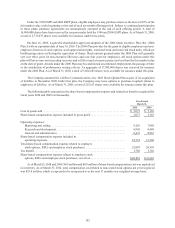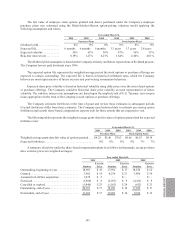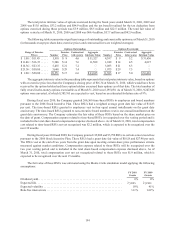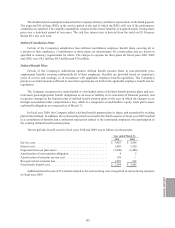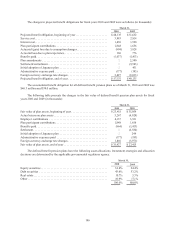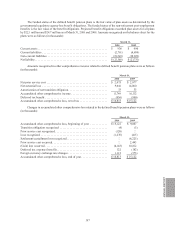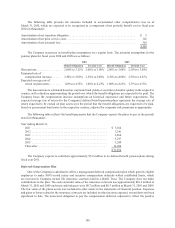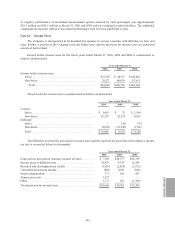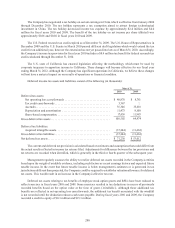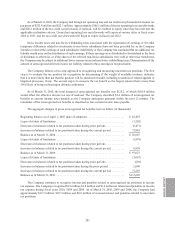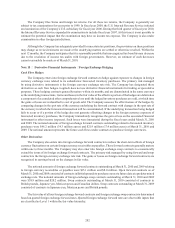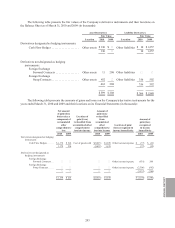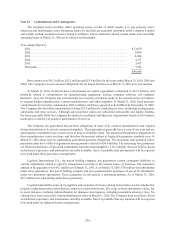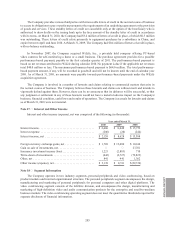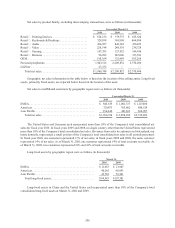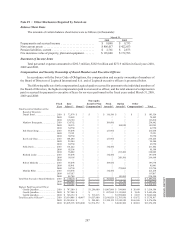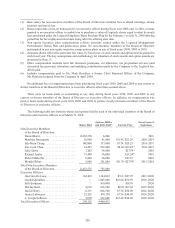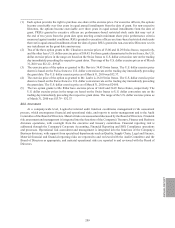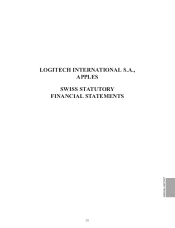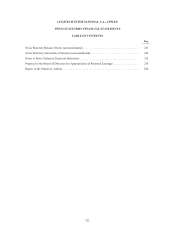Logitech 2010 Annual Report Download - page 214
Download and view the complete annual report
Please find page 214 of the 2010 Logitech annual report below. You can navigate through the pages in the report by either clicking on the pages listed below, or by using the keyword search tool below to find specific information within the annual report.202
The Company files Swiss and foreign tax returns. For all these tax returns, the Company is generally not
subject to tax examinations for years prior to 1999. In fiscal year 2009, the U.S. Internal Revenue Service initiated
an examination of the Company’s U.S. subsidiary for fiscal year 2006. During the third quarter of fiscal year 2010,
the Internal Revenue Service expanded its examination to include fiscal year 2007. At this time it is not possible to
estimate the potential impact that the examination may have on income tax expense. The Company is also under
examination in other foreign jurisdictions.
Although the Company has adequately provided for uncertain tax positions, the provisions on these positions
may change as revised estimates are made or the underlying matters are settled or otherwise resolved. Within the
next 12 months, the Company anticipates that it is reasonably possible that unrecognized tax benefits may decrease
due to the resolution of income tax audits with foreign governments. However, an estimate of such decreases
cannot reasonably be made as of March 31, 2010.
Note 15 — Derivative Financial Instruments – Foreign Exchange Hedging
Cash Flow Hedges
The Company enters into foreign exchange forward contracts to hedge against exposure to changes in foreign
currency exchange rates related to its subsidiaries’ forecasted inventory purchases. The primary risk managed
by using derivative instruments is the foreign currency exchange rate risk. The Company has designated these
derivatives as cash flow hedges. Logitech does not use derivative financial instruments for trading or speculative
purposes. These hedging contracts generally mature within six months, and are denominated in the same currency
as the underlying transactions. Gains and losses in the fair value of the effective portion of the hedges are deferred as
a component of accumulated other comprehensive loss until the hedged inventory purchases are sold, at which time
the gains or losses are reclassified to cost of goods sold. The Company assesses the effectiveness of the hedges by
comparing changes in the spot rate of the currency underlying the forward contract with changes in the spot rate of
the currency in which the forecasted transaction will be consummated. If the underlying transaction being hedged
fails to occur or if a portion of the hedge does not generate offsetting changes in the foreign currency exposure of
forecasted inventory purchases, the Company immediately recognizes the gain or loss on the associated financial
instrument in other income (expense). Such losses were immaterial during the fiscal years ended March 31, 2010
and 2009. The notional amounts of foreign exchange forward contracts outstanding related to forecasted inventory
purchases were $46.2 million (34.3 million euros) and $21.9 million (17.4 million euros) at March 31, 2010 and
2009. The notional amount represents the future cash flows under contracts to purchase foreign currencies.
Other Derivatives
The Company also enters into foreign exchange forward contracts to reduce the short-term effects of foreign
currency fluctuations on certain foreign currency receivables or payables. These forward contracts generally mature
within one to three months. The Company may also enter into foreign exchange swap contracts to economically
extend the terms of its foreign exchange forward contracts. The primary risk managed by using forward and swap
contracts is the foreign currency exchange rate risk. The gains or losses on foreign exchange forward contracts are
recognized in earnings based on the changes in fair value.
The notional amounts of foreign exchange forward contracts outstanding at March 31, 2010 and 2009 relating
to foreign currency receivables or payables were $15.1 million and $8.0 million. Open forward contracts as of
March 31, 2010 and 2009 consisted of contracts in British pounds to purchase euros at a future date at a predetermined
exchange rate. The notional amounts of foreign exchange swap contracts outstanding at March 31, 2010 and 2009
were $38.9 million and $20.2 million. Swap contracts outstanding at March 31, 2010 consisted of contracts in
British pounds, Japanese yen, Mexican pesos and Canadian dollars. Swap contracts outstanding at March 31, 2009
consisted of contracts in Japanese yen, Mexican pesos and British pounds.
The fair value of all our foreign exchange forward contracts and foreign exchange swap contracts is determined
based on quoted foreign exchange forward rates. Quoted foreign exchange forward rates are observable inputs that
are classified as Level 1 within the fair value hierarchy.


